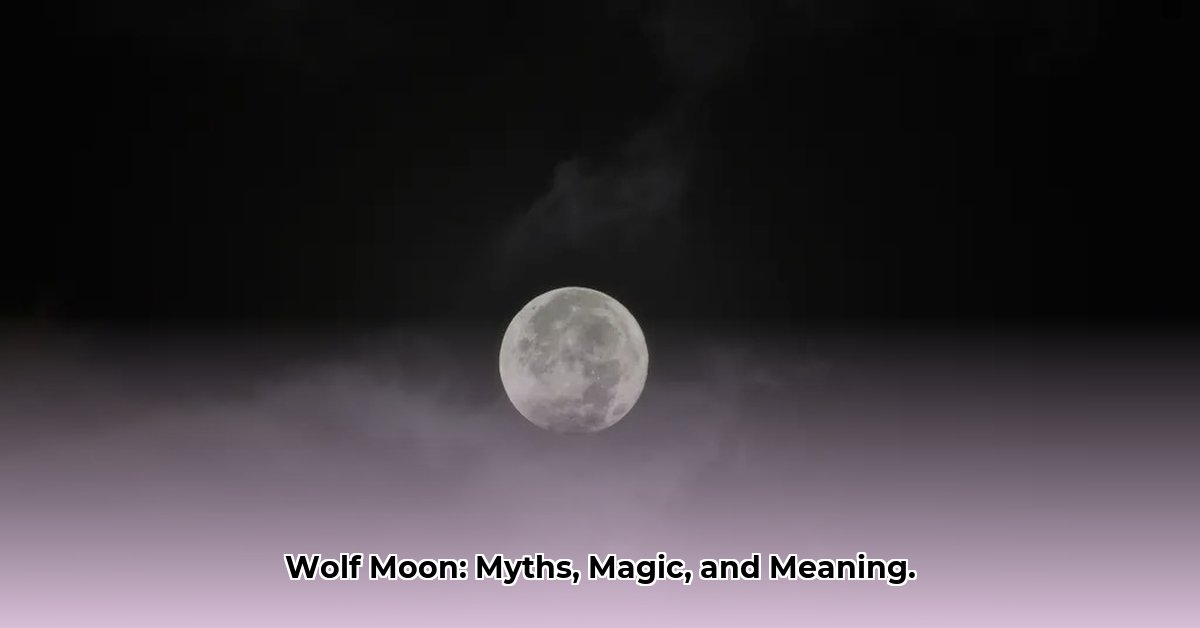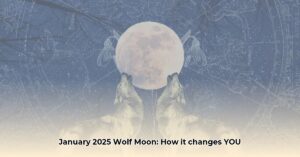The Wolf Moon, a name whispered through time, evokes images of frosty landscapes and the haunting cries of wolves echoing under a brilliant winter moon. But this celestial event is more than just a captivating sight. It carries a rich tapestry of folklore, spiritual meaning, and cultural significance, connecting us to ancient traditions and the rhythms of the natural world. Let’s embark on a journey to uncover the secrets of the Wolf Moon, exploring its origins, cultural impact, and the enduring fascination it holds for us today.
Decoding the Name: Origins of the Wolf Moon
The name “Wolf Moon” likely originates from the Algonquin tribes of North America, though its exact origins remain shrouded in some mystery. The most common theory suggests a connection to the increased wolf activity during the midwinter months, particularly their more frequent howls. Were these howls driven by hunger, territorial disputes during breeding season, or perhaps something more spiritual? Researchers continue to explore wolf behavior, so definitive answers remain elusive. While the Algonquin connection is strongest, other cultures, including the Celts and Anglo-Saxons, had their own names for this moon, reflecting the diverse ways humans have interpreted the celestial sphere.
Cultural Echoes: The Wolf Moon Across Traditions
Full moons have always held a special place in human cultures, serving as markers of time, inspiration for stories, and focal points for spiritual practices. The Wolf Moon is no exception. For many Native American tribes, this midwinter full moon was a time for community gatherings, reinforcing social bonds during the harshest months. It was also a period of introspection, much like the quiet stillness of winter itself, offering a chance to reflect on the past year and set intentions for the new one.
Beyond North America, the Wolf Moon’s significance resonated in other traditions. In some Celtic cultures, this time of year was associated with the goddess Cerridwen, a powerful figure representing wisdom, transformation, and the cyclical nature of life. This suggests that the Wolf Moon’s symbolism of renewal and change may have ancient roots spanning diverse cultures.
A Modern Lens: Spiritual Meaning of the Wolf Moon
Today, the Wolf Moon continues to hold spiritual meaning for many, often seen as a time for personal growth and empowerment. It encourages us to embrace our inner “wolf,” to tap into our intuition, resilience, and connection to the natural world. Some view it as an opportune time for setting intentions, releasing old patterns, and embracing the potential for transformation that the new year brings. Just as the wolves navigate the challenges of winter, the Wolf Moon reminds us of our own strength and ability to overcome obstacles.
The Science of the Glow: Understanding the Lunar Cycle
Stripping away the mystique, the Wolf Moon is simply the first full moon of the calendar year. Astronomically, it occurs when the Earth is positioned directly between the sun and the moon, allowing the sun’s light to fully illuminate the lunar surface. This alignment often results in a particularly bright and large appearance, capturing our attention and inspiring awe. While folklore links the Wolf Moon to increased wolf hunger, scientific evidence suggests that the more noticeable howling during this time is more likely related to breeding season.
Witnessing the Wonder: Observing the Wolf Moon
Experiencing the Wolf Moon’s beauty is a simple yet profound act. Find a location away from city lights, allowing the moon’s radiance to shine unimpeded. Consult a lunar calendar or online resources to determine the precise date and time of the next Wolf Moon in your area. As you gaze upon its silvery glow, consider the rich history and diverse interpretations this celestial event embodies. Let it be a moment of connection to the natural world, a time for reflection, and an opportunity to appreciate the enduring power of the Wolf Moon.
When Does the Wolf Moon Occur?
The Wolf Moon typically graces the sky in January, but its exact date varies each year due to the nuances of the lunar cycle. The moon completes its cycle approximately every 29.5 days, which doesn’t perfectly align with our calendar months. This means the Wolf Moon can sometimes occur in late December or early February. For example, in 2024, the Wolf Moon peaked on January 25th, while in 2025 it occurred on January 13th. The best way to determine the precise date for any given year is to consult a lunar calendar or reliable online resource.
| Year | Date of Wolf Moon | Approximate Time (ET) |
|---|---|---|
| 2024 | January 25 | 12:54 PM |
| 2025 | January 13 | 5:27 PM |
| 2026 | February 2 | 12:28 AM |
Note: These times are approximations and may vary slightly depending on your location.
The shifting date of the Wolf Moon each year adds to its mystique. There is ongoing research exploring the potential influence of these lunar variations on natural phenomena, including tides and animal behavior. This reminds us that even in our age of scientific understanding, the moon retains an element of mystery, inviting us to continue exploring its connection to our planet and ourselves.







